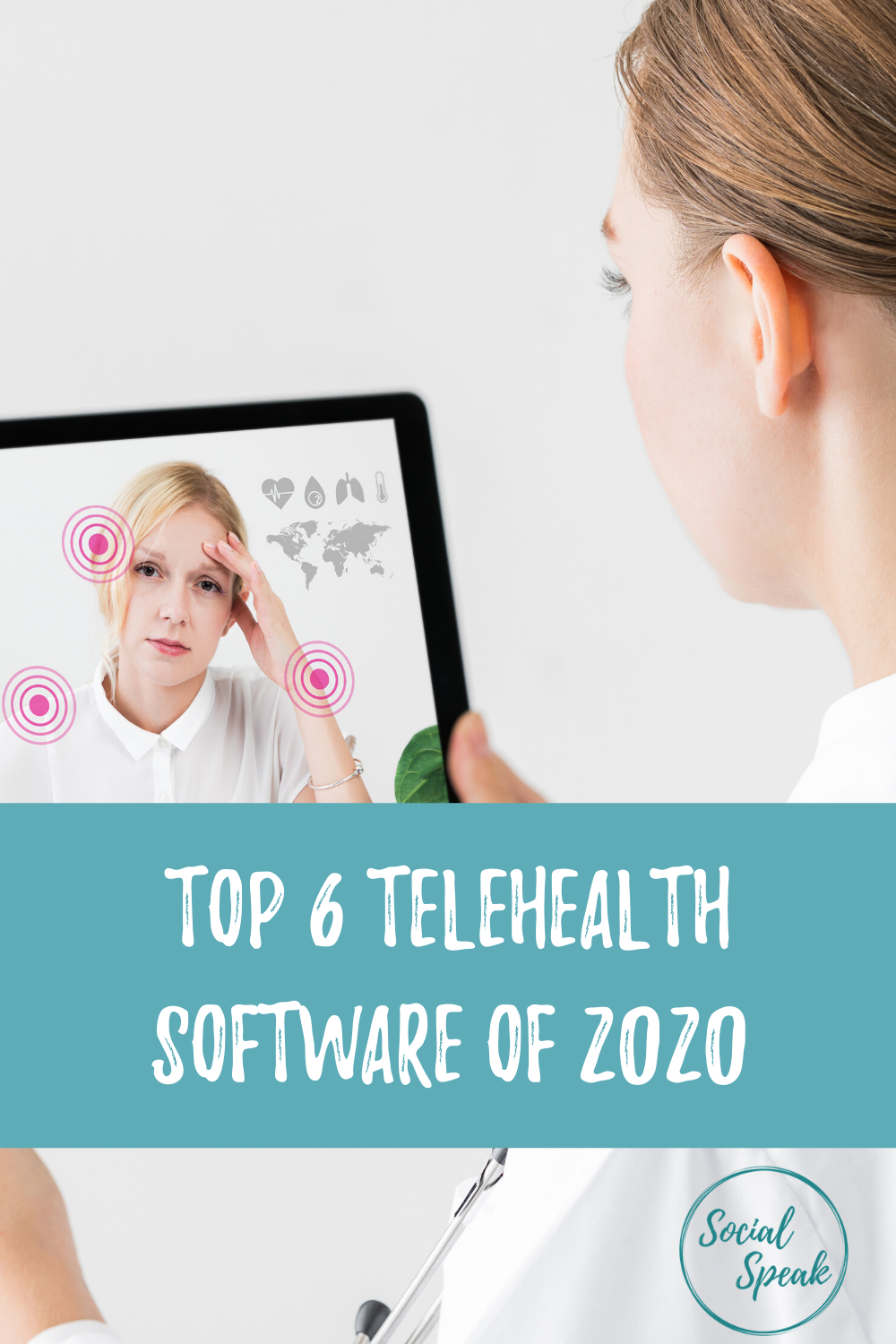Over the last decade, telehealth has gained much traction on a global scale. It is quickly becoming a pillar of modern healthcare and is expected to grow exponentially in the coming years.
Through telehealth, patients are given the option to consult a healthcare provider at the comfort of their home. This translates to happier patients, more revenue for your practice, and improved workflows that save you time. In order to facilitate these virtual visits, you will need an intuitive interface and a secure system.
What is telehealth software?
Telehealth software is the platform used by healthcare providers to provide remote clinical healthcare when they cannot meet in person. Through this software, healthcare becomes more accessible and cost-effective.
Telehealth software is not just a simple tool. Healthcare providers will need a secure portal where they can conduct remote patient examination, collect data, as well as store, share, and analyze confidential medical information and records.
There are literally hundreds of HIPAA-compliant telehealth solutions in the market. Use this as a guide to selecting the best telehealth software for your practice.
Doxy.me – https://doxy.me/
Pricing: Free for limited services
Professional: $35/month
Clinic: $50/month
Doxy.me is safe, simple, and secure platform that lets physicians meet with patients remotely. The cloud-based system can be accessed via any web browser or smarthpones.
Simple, accessible, and free of charge, doxy.me is on a mission to make telemedicine simple and easy for you.
Features include:
- Free for all to use
- Business Associate Agreement (BAA) included on all accounts, even the free version
- High quality audio and video
- Accessible from anywhere – desktop, laptop, and mobile devices
- No download required
- HIPAA, GDPR, PHIPA/PIPEDA & HITECH compliant
Healthie – https://gethealthie.com/
Pricing: Beginnings: $29/month
Small practice: $89/month
Practice Plus: $129/month
Group Practice: $149/month
Organization: Custom
Healthie was built specifically for nutritionists, dieticians, health coaches, and other wellness professionals. It is a web and mobile platform that allows nutrition and wellness professionals run their business and collaborate with their clients. It includes core business features such as scheduling, client education, charting, bills and payments, virtual care and more.
Healthie has all the functionality you need to run and grow your nutrition and wellness business in one software. No more cobbling together different tools.
Features include:
- Access from any device – laptop, desktop, mobile phones, and tablet PCs
- Range of customization and white-labeling options
- Integration resources to fit your specific needs
- HIPAA and PCI-compliant security
- Extensive support and resources
Practice Better – https://practicebetter.io/
Pricing: Sprout Plan: Free
Starter Plan: $19
Professional Plan: $49
Plus Plan: $79
Team Plan: $135
Practice Better is a complete, secure cloud-based practice management platform for health and wellness professionals. It is packed with features designed to relieve health and wellness professionals of burdensome adminstrative tasks.
It saves you hours of work, so you can help more reach their health goals. With Practice Better, you can manage your professional recommendations from one secure place.
Features include:
- Telehealth video chat
- Record and manage sessions
- Uncompromising security
- 24/7 access to files and records
- Branding and customization
- Automate tasks and appointment reminders
- Secure chat and instant alerts
Simple Practice – https://www.simplepractice.com/
Pricing: Essential Plan: $39/ month
Professional Plan: $59
With Simple Practice, you get a secure, fully integrated video solution. Your client communication, notes, calendar, and billing are combined in one system. That means, you’ll have more time seeing your clients, getting paid, and growing your business.
Features include:
- HIPAA compliant
- Conduct secure video appointments with your clients
- Free telehealth resources
- Automated billing and insurance processing
- Paperless notes and documentation
- Share videos, goal tracking, worksheets, and more from your screen
- Start a video call from anywhere, on any device
Chiron Health – https://chironhealth.com/
Pricing: Independent: $150/month
Enterprise: Need to request quote
Chiron Health is a powerful telehealth software solution that is designed for practices of all sizes. The system makes it easy to successfully implement a telehealth program in your practice with simple patient features, streamlined workflows, and customized plans. It allows users to schedule appointments with patients based on their availability, updates practitioner calendar.
Chiron Health also offers eligibility checks to verify informed consent documentation and insurance information.
Features include:
- Streamlined patient workflow
- HIPAA-compliant
- Signed BAA for each client
- Custom patient marketing
- Patient notifications
- Co-pay collection
swyMed – http://swymed.com/
Pricing: Not available on the website
swyMed is a patented telehealth software that is designed for community paramedicine programs, emergency response encounters, home and hospital health monitoring.
swyMed’s patented software overcomes traditional connectivity issues. It allows hopitals to use their medical expertise in the ambulance and at the scene of an emergency by delivering reliable, real-time video telemedicine, even in low bandwidth areas.
Features include:
- Community paramedicine made easy
- Extend the reach of your hospital
- Reliable, real-time video telemedicine
- Connects specialist and patients in live video
- HIPAA compliant and fully secure
- Home health solutions
Final thoughts
Considering how much traction telehealth is gaining during the current pandemic, it is important to choose a software that works for your patients and the specialty you practice. The right telehealth software has the power to change the way you provide healthcare for the better.
If you need help finding the right teleheatlh software or you’re interested in integrating telehealth into your practice, please do not hesitate to contact us. We are here to help.
We’d love to offer a free 30-minute consultation call to discuss the ins and outs of implementing a telehealth feature into your practice.









